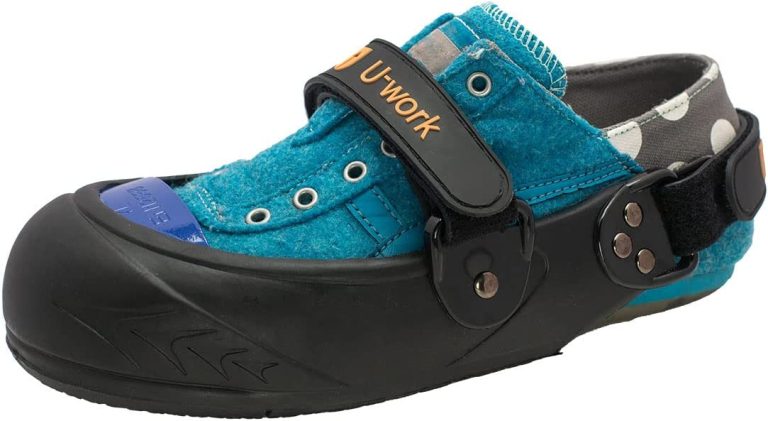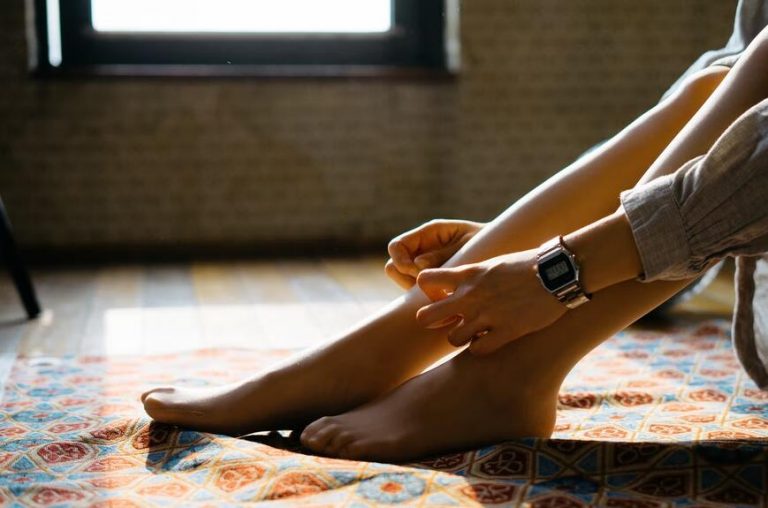High Arched Feet: Causes, Symptoms, and Treatment Options
High arches often run in families, showing a strong genetic link to this foot type. Understanding high arched feet, or pes cavus, is key. This foot type has an unusually high and stiff arch. People with this condition might experience pain, unsteadiness, and overpronation. These issues can lead to several foot ailments, which we will discuss here.
If you have high arched feet, it might be from your genes or certain neurological conditions. This can lead to problems such as metatarsalgia, weak ankles, twisted toes, heel pain, and hard skin. It’s important to get the right diagnosis. You can figure this out yourself, but seeing a foot doctor and getting tests help a lot. Treatment can be things like special shoe inserts and doing exercises. Sometimes, surgeries are needed for serious cases.
Key Takeaways
- High arched feet, or pes cavus, are characterized by an abnormally high and rigid foot arch.
- Causes can be genetic or related to underlying neurological conditions like Charcot-Marie-Tooth disease.
- Common symptoms include pain, instability, toe deformities, and increased risk of conditions like plantar fasciitis.
- Non-surgical treatments include custom orthotics, physical therapy, and proper footwear, while surgery may be necessary in severe cases.
- Early intervention and consultation with a podiatrist are crucial for managing high arched feet and preventing worsening symptoms.
Understanding High Arched Feet
High arched feet, known as pes cavus, have a very high and rigid foot arch. This is not like the normal foot arch, which is more flexible. It helps with shock absorption and spreading weight evenly across the foot.
What is Pes Cavus?
Pes cavus, or high arched feet, is when the foot has a very high arch. This can cause problems because weight doesn’t spread evenly. It puts more pressure on certain parts of the foot, leading to issues.
Anatomy of the Foot Arch
The arch in the foot goes from the heel to the ball of the foot. It helps with shock absorption and weight distribution. But with high arched feet, this arch is too high and rigid. This makes it hard for the foot to handle the body’s weight properly.
Impact on Weight Distribution
High arches in pes cavus make weight distribution uneven. Weight gets pushed onto the heels, outer edges, and front of the feet. This can lead to instability and more foot problems. It also increases the chance of getting hurt.
| Foot Arch Type | Weight Distribution | Stability |
|---|---|---|
| Normal Arch | Even distribution across the entire foot | High |
| High Arch (Pes Cavus) | Concentrated on heels, lateral column, and ball of foot | Low |
Causes of High Arch Feet
High arched feet have different causes. The main cause is a inherited structural deformity. This means the arch is high and stiff because of genes. Certain neurological conditions like Charcot-Marie-Tooth disease can also make the feet have a high arch. This happens because of issues with how the muscles and nerves work together.
Other reasons for high arch feet can include problems after a stroke, spina bifida, and conditions like cerebral palsy, clubfoot, poliomyelitis, and muscular dystrophy.
Inherited Structural Deformity
A big cause of high arched feet is something you get from your family. This issue is called pes cavus. It can happen when you’re born or as you grow up. This condition makes your arch high and hard because of genes.
Neurological Conditions
Some brain and nerve problems can also lead to high arched feet. Charcot-Marie-Tooth disease is one example. It messes with the muscles and lets the arch get too high. Issues after a stroke, spina bifida, cerebral palsy, and muscular dystrophy can also be reasons for this.
Other Underlying Causes
High arched feet may also come from other health issues, not just genes or nerves. Problems like clubfoot, poliomyelitis, and injuries can make your feet look like this. These issues can make your foot develop wrong, making the arch too high.
Symptoms of High Arch Feet
High arched feet cause many problems. A big issue is metatarsalgia. It makes the front part of the foot hurt and cramp. As a result, walking and standing for a long time gets hard.
Ankle instability is another common problem. It makes the foot turn out slightly. This increases the chance of ankle injuries and can cause pain in the knee, hip, and lower back.
Toe Deformities
High arched feet can make the toes curl. They may form hammertoes or claw toes. This puts a lot of pressure on shoes. It leads to painful calluses on the feet.
Plantar Fasciitis
A high arch can also lead to plantar fasciitis, which is tendon inflammation. This causes sharp heel pain, especially in the morning.
Calluses and Pain
Too much pressure on the foot can cause painful calluses. If you have diabetes, you need to watch out for foot ulcers. They can be hard to treat.
Knowing the symptoms of high arch feet is important. It helps you find the right treatment. A podiatrist can figure out the cause and create a care plan just for you.
Diagnosing High Arched Feet
If you suspect you have high arched feet, here’s a simple way to check. Wet the bottom of your foot and step on a piece of paper. You’ll notice a thin area between the heel and ball of your foot. This shows a high arch. For a full check, it’s best to see a podiatrist.
Podiatrist Evaluation
At the podiatrist’s office, you’ll get a thorough checkup. They will look for signs specific to high arched feet. This includes examining your feet for calluses and checking how your shoes wear.
They might also order X-rays or suggest seeing a neurologist. This is to find out if your high arches are from a structural or a neuro issue.
Physical Examination
The podiatrist will do a detailed check of your feet. They will look for things like muscle imbalance. This helps them understand the root of your high arched feet.
Imaging Tests
Sometimes, they may need X-rays for a closer look. These can show details on bone and joint structure. Imaging tests help in getting a clear diagnosis of your foot condition.
If necessary, the podiatrist might also recommend seeing a neurologist. This could be for more testing on a possible neurological cause of your high arched feet.
Non-Surgical Treatment Options
For people with high arched feet, non-surgical methods are key. Custom orthotic devices placed in shoes are the first step. They correct foot position and give support. This improves balance and comfort. Ankle braces are also helpful. They keep weak ankles steady. This stops feet from rolling outward too much (supination).
Custom Orthotic Devices
These devices are made just for you. They focus on your foot’s shape and movement. They offer direct support and cushioning. This helps with problems high arched feet can cause. These include foot pain, heel pain, and unstable ankles.
Ankle Braces
Ankle braces do a lot to keep your ankle in line. They stop it from rolling too much to the side. This is important for people with high arches. It lowers the chance of spraining your ankle. It also makes your feet and ankles stronger and steadier.
Physical Therapy
Doctors might suggest physical therapy. It’s for doing exercises that stretch and strengthen your muscles. That improves foot health. Therapists can teach the right way to walk and move your feet. This can reduce the effects of having high arches.
Custom Orthotic Shoes
Sometimes, regular shoes do not fit well enough. Then, you can get orthotic shoes just for you. They are made to support your high arches. It meets your personal foot needs. Specific shoes help a lot with comfort and stability for high arched feet.
Surgical Interventions
Sometimes, simple treatments for high arched feet don’t work. So, surgery might be the next step. At the MedStar Health Foot and Ankle Center, more than 1,500 surgeries are done yearly. Our surgeons fix foot and ankle problems, including cavus foot deformity.
These surgeries correct the bone shape and other issues. They aim to improve stability and reduce pain.
Tendon Release
Tendon release is a common surgery. It cuts a tight tendon to ease pressure and boost movement. It can help with problems like metatarsalgia and ankle issues linked to high arched feet.
Tendon Transfer
Tendon transfer is also used sometimes. This surgery moves a tendon to a new spot. It helps to adjust foot function and reduce strain.
Osteotomy
Osteotomy is an open cut on a bone. It’s used to adjust bone length or shape. For cavus foot, this surgery can fix bone deformities.
Arthrodesis
Arthrodesis fuses together nearby bones. It’s another way to add foot and ankle joint stability. This technique is used in some cavus foot surgeries.
Potential Risks and Complications
Like all surgeries, there are some risks with treating high arched feet. These include infections, nerve issues, and bone healing problems. Our surgeons work carefully to lower these risks for a good surgery result.
Finding Proper Footwear
Living with high arched feet means finding right footwear. It should offer good support and spread weight evenly. You might not find what you need at regular stores. This is why shopping at specialty running shoe shops or getting custom-made orthotic shoes can be better. Good footwear has thick soles that are also flexible. Heels should be no higher than two inches. A heel shape that is broader or tapered is good for more support. What else to look for? A wide toe box and laces that let you adjust tightness can help if your tendons hurt.
Arch Support Insoles
Using three-dimensional arch support insoles is also a great idea. They add extra support and stop your toes from curling. These insoles fix how your feet touch the ground. This makes you more stable and lessens the pain in your high arches.
Toe Spacers
Toe spacers can help a lot too. They work by keeping your toes straight and stopping them from folding over. This lowers your chances of getting painful things like calluses. When used together with well-fitting footwear and arch support insoles, toe spacers play a big role in keeping feet with high arches happy and healthy.
Preventive Measures
Stopping high arched feet issues early is key. A podiatrist can help evaluate your feet. They can take away pain and fix any issues with how you walk. This stops problems with other joints before they start. They use a gait analysis to see how your feet work. Then, they make a plan just for you. It’s also good to change any activities or sports that make your feet hurt more. This could be tough exercises that shake your body. Doing this lowers the chance of more problems.
Early Intervention
It’s smart to see a podiatrist and fix foot pain or problems quickly. Doing this early can fix how you walk before it causes big issues. This makes taking care of high arched feet easier.
Gait Analysis
A gait analysis shows how your feet move and helps make a special plan for you. It points out what might make your feet have high arches. This is helpful to treat your condition.
Activity Modification
Changing hard exercises can help with high arches. It makes it less likely to get worse. Lowering impact on your feet can really help. This keeps high arched feet and their problems from getting out of control.
Living with High Arched Feet
Living with pes cavus, or high arched feet, means doing a lot for foot care. You need good shoes, orthotics and toe spacers, and check your feet often. Try to stay away from activities that can hurt your feet. This is important for avoiding problems like ankle troubles, calluses, and for people with diabetes, foot ulcers.
Foot Care Routine
Having high arched feet calls for a special foot care routine. Pick shoes with thick soles, low heels, and roomy toe boxes. Adding three-dimensional arch inserts and custom orthotics can boost comfort. Using toe spacers helps too.
Lifestyle Adjustments
If you have high arches, some activities might not be right for you. It’s better to choose gentle exercises like swimming. Also, watch out for foot problems. Don’t forget, taking care of your feet is key to avoid more serious issues.
Monitoring for Complications
Keeping an eye on your feet and acting early is vital. Work with a podiatrist to catch any problems soon. Getting help for foot pain or trouble walking can keep your feet healthy. This cuts down the chance of bigger problems.
Conclusion
High arched feet are feet with a very high arch. They are stiff and can cause pain, a lack of balance, and feet rolling inward too much when walking. It’s vital to know the causes, symptoms, and treatments for this issue, both without surgery and with surgery.
Getting help early, wearing the right shoes, and making changes in how you live can keep your feet healthy. It’s smart to talk to experts like foot doctors and therapists. They can give you the best advice for your special situation.
Being active, keeping a good weight, and picking the right shoes are steps you can take yourself. They can make a big difference for your foot health. This way, people with high arched feet can feel better and live well.









